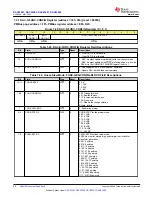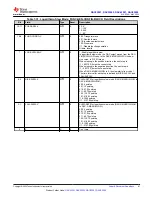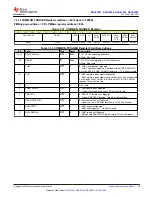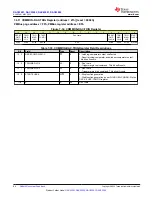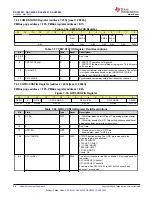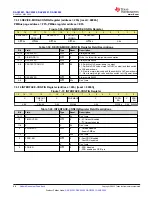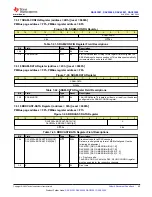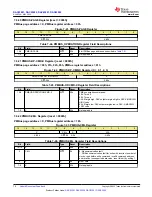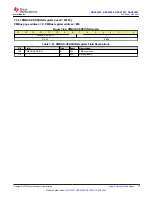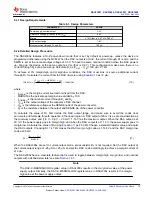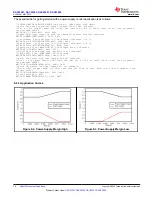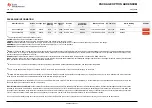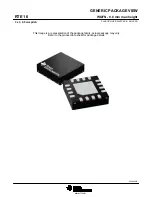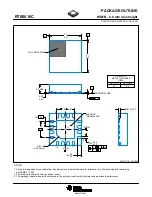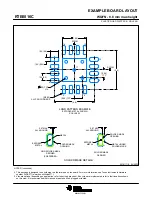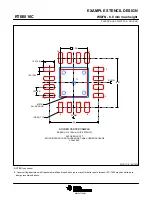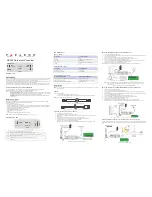
8 Application and Implementation
Note
Information in the following applications sections is not part of the TI component specification,
and TI does not warrant its accuracy or completeness. TI’s customers are responsible for
determining suitability of components for their purposes, as well as validating and testing their design
implementation to confirm system functionality.
8.1 Application Information
The DACx300x are single-channel and dual-channel buffered, force-sense output, voltage-output and current-
output smart DACs that include an NVM and internal reference, and available in a tiny 3-mm × 3-mm package.
• In voltage-output mode, short the OUTx and FBx pins for each channel. In current-output mode, leave the
FBx pins unconnected. The FBx pins function as inputs in comparator mode.
• The external reference must not exceed VDD, either during transient or steady-state conditions. For the best
Hi-Z output performance, use a pullup resistor on the VREF pin to VDD.
• In case VDD remains floating during the off condition, place a 100-kΩ resistor to AGND for proper detection
of the VDD off condition for voltage margining.
• All the digital outputs are open drain; use external pullup resistors on these pins.
• The interface protocol is detected at power-on, and the device locks to the protocol as long as VDD is on.
• When allocating nonoverlapping I
2
C addresses on a system I
2
C bus, consider the broadcast address as well.
I
2
C timeout can be enabled for robustness.
• SPI mode is 3-wire by default. Configure the GPIO pin as SDO in the NVM for SPI readback capability. The
SPI clock speed in readback mode is slower than in write mode.
• Power-down mode sets the DAC outputs to Hi-Z by default. Change the configuration appropriately for
different power-down settings. The DAC channels can also power-up with a programmed DAC code in NVM.
8.2 Typical Application
A power-supply margining and scaling circuit is used to trim, scale, or test the output of a power converter.
This example circuit is used to test a system by margining the power supplies for adaptive voltage scaling or to
program a desired value at the output. Adjustable power supplies, such as low-dropout regulators (LDOs) and
DC/DC converters, provide a feedback or adjust the input that is used to set the desired output. A precision
voltage-output DAC is the best choice for controlling the power-supply output linearly.
shows a control
circuit for a switch-mode power supply (SMPS) using the DACx300x. Typical applications of power-supply
margining are communications equipment, enterprise servers, test and measurement, and general-purpose
power-supply modules.
SMPS / LDO
R
1
R
2
V
FB
SENSE
PH
GND
V
OUT
IN
BOOT
C
L
C
B
L
VDD
V
IN
VOUT/
IOUT
VOUT/
IOUT
DAC
REG
DAC
BUF
DAC
REG
DAC
BUF
NVM
Internal
Reference
LDO
Output Configuration
Logic
VREF
CAP
AGND
Digital Inter
face
SCL/SYNC
SDA/SCLK
A0/SDI
PROTECT
R
3
R
3
1.5
μ
F
0.1
μ
10 k
Ω
Power-supply: 0
DACx300x
Power-supply: 1
Figure 8-1. Voltage Margining and Scaling
DAC53001, DAC53002, DAC63001, DAC63002
SLASF48 – MAY 2022
72
Copyright © 2022 Texas Instruments Incorporated
Product Folder Links:



